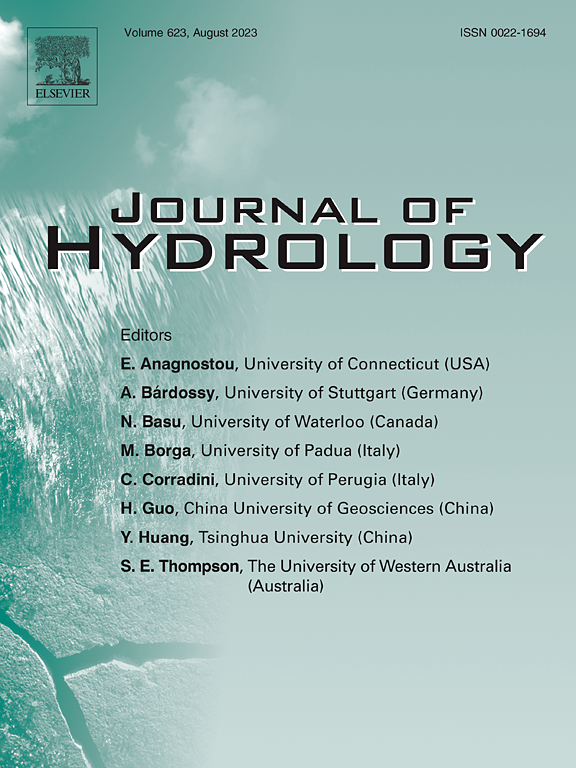Human flood adaptation characteristics: A comparative study of three global river deltas
IF 5.9
1区 地球科学
Q1 ENGINEERING, CIVIL
引用次数: 0
Abstract
River deltas are critical socio-economic and ecological regions but face heightened flood risks due to climate change and urbanization. Taking the Ganges-Brahmaputra-Meghna (GBM) River Delta, the Mississippi River Delta, and the Yangtze River Delta as case studies, this research aims to reveal the characteristics and formation mechanisms of human adaptation to flood risks across different deltaic regions. Through integrating hydrodynamic modeling, spatiotemporal analysis, and multi-source datasets, this study systematically investigates flood adaptation characteristics across three major deltas based on a newly developed comprehensive framework of Human-Flood Distance (HFD) and resilience. The results show that: spatially, while these three deltas exhibit varying degrees of inundation extent, each faces unique flood vulnerability challenges; temporally, the GBM River Delta exhibits stabilized population growth and HFD recovery after initial contraction, the Mississippi River Delta shows significant fluctuations in both population and HFD, while the Yangtze River Delta demonstrates continuous population growth with steady HFD increase; in terms of adaptation mechanisms, resilience assessment indicates that the Mississippi River Delta demonstrates the highest resilience, primarily driven by recovery capacity, the Yangtze River Delta shows limited but structurally supported resilience, while the GBM River Delta exhibits negative indices due to multiple constraints. These findings emphasize the importance of developing context-specific flood risk management strategies and provide feasible flood prevention solutions for policymakers, particularly in formulating adaptation strategies that comprehensively consider both flood safety and sustainable development.
人类洪水适应特征:全球三大河流三角洲的比较研究
河流三角洲是重要的社会经济和生态区域,但由于气候变化和城市化,面临着更高的洪水风险。以恒河-布拉马普特拉-梅克纳河三角洲、密西西比河三角洲和长江三角洲为例,揭示不同三角洲地区人类对洪水风险的适应特征及其形成机制。基于人类-洪水距离(HFD)和恢复力的综合框架,通过水动力模型、时空分析和多源数据集的整合,系统地研究了三大三角洲的洪水适应特征。结果表明:在空间上,三个三角洲的淹没程度不同,但各自面临着独特的洪水脆弱性挑战;从时间上看,GBM河三角洲人口增长稳定,HFD经过初期收缩后恢复,密西西比河三角洲人口和HFD均出现显著波动,而长三角人口持续增长,HFD稳定增长;在适应机制方面,恢复力评价结果表明,密西西比河三角洲恢复力最高,主要受恢复能力驱动;长江三角洲恢复力有限,但受结构支撑;这些发现强调了制定因地制宜的洪水风险管理战略的重要性,并为决策者提供了可行的防洪解决方案,特别是在制定综合考虑洪水安全和可持续发展的适应战略方面。
本文章由计算机程序翻译,如有差异,请以英文原文为准。
求助全文
约1分钟内获得全文
求助全文
来源期刊

Journal of Hydrology
地学-地球科学综合
CiteScore
11.00
自引率
12.50%
发文量
1309
审稿时长
7.5 months
期刊介绍:
The Journal of Hydrology publishes original research papers and comprehensive reviews in all the subfields of the hydrological sciences including water based management and policy issues that impact on economics and society. These comprise, but are not limited to the physical, chemical, biogeochemical, stochastic and systems aspects of surface and groundwater hydrology, hydrometeorology and hydrogeology. Relevant topics incorporating the insights and methodologies of disciplines such as climatology, water resource systems, hydraulics, agrohydrology, geomorphology, soil science, instrumentation and remote sensing, civil and environmental engineering are included. Social science perspectives on hydrological problems such as resource and ecological economics, environmental sociology, psychology and behavioural science, management and policy analysis are also invited. Multi-and interdisciplinary analyses of hydrological problems are within scope. The science published in the Journal of Hydrology is relevant to catchment scales rather than exclusively to a local scale or site.
 求助内容:
求助内容: 应助结果提醒方式:
应助结果提醒方式:


